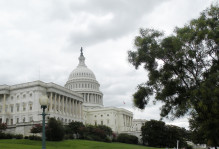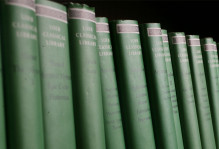(Way!) Outside the Classroom
Traipsing in the Blue Ridge. Scuttling about that incredible granite exposure at Richmond’s Belle Isle. A departmental trip to the Potomac River’s thundering Great Falls. To our friends, significant others, and parents, it always seems that we geology students are off somewhere for the day, for the weekend, over break, whisked away by professors determined to pry us from desks and texts and bring us to the field.
Every Spring Semester, William & Mary’s Geology department offers just that with the ever-popular course “Geology 310—Regional Field Geology” that takes undergraduates of all majors and experience levels and gives them the opportunity to do geology by applying classroom principles in the field. The day after graduation, myself, 27 other students and Professor Chuck Bailey headed west from Williamsburg. This year’s trip took us to the Colorado Plateau, an expansive region spanning much of New Mexico, Arizona, Utah, and Colorado. The Plateau’s spectacular scenery records the history of the western United States since the Precambrian times (~2 billion years ago), and is a perfect location to study geology.
Over the three and a half weeks that it took to traverse the southwestern United States and return to W&M, we visited some monumental geologic locales. At the Grand Canyon, we hiked to the Colorado River, descending through the ages to the Precambrian Vishnu Basement—1.8 billion years of geologic history in 4,500 feet of strata. In central Colorado’s Sawatch Range, we ascended Mount Elbert, the highest peak in the Colorado Rockies.
Most challenging of all were our field projects, when we were set loose to discern the lay of the land, investigate the rocks and geologic structures, and work together—conferring on interpretation, composing geologic stories. We mapped the bedrock in eastern Nevada’s desolate Snake Range, pondered the Fremont River’s ancient fluvial terraces near Capitol Reef, Utah, and admired an enormous potassium feldspar crystal on the west slope of the Colorado Rockies. Our efforts generated an incredible synthesis of collective knowledge, talents, and personalities, and no one returned home without a new respect for the significance of geological fieldwork.
As and undergraduate geology major I knew that W&M faculty succeeded in bringing their subjects to life within the classroom. On this trip I learned that W&M faculty shine brightest when they are in their “natural habitat”.
Geology 310 by the Numbers:
27± 2 – student members of the 310 crew
1 – dedicated professor leading the charge
25 – nights spent camping
7,000 – miles driven (21,000 miles for all the vans)
29 degrees – lowest temperature
14,440 ft. – highest elevation reached (top of Mt. Elbert, CO)
0 – field books lost
Drew Laskowski
Class of 2010



No comments.
Comments are currently closed. Comments are closed on all posts older than one year, and for those in our archive.